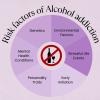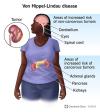
GÜNDE 1 PAKET SİGARA İÇENLERİN AKCİĞER HÜCRELERİNDE 150, GIRTLAK HÜCRELERİNDE 97, YUTAK HÜCRLERİNDE 39, AĞIZ BOŞLUĞUNDA 23, İDRAR KESESİNDE 18 VE KARACİĞER HÜCRELERİNDE 6 MUTASYON YAPTIĞI ORTAYA KONDU.
Cancer mutation patterns differ in smokers, nonsmokers DNA damage signatures offer clues to origin of malignancies in various tissues
BY RACHEL EHRENBERG 2:06PM, NOVEMBER 3, 2016
DNA in cancerous tissues of tobacco smokers shows mutation patterns that differ from those in cancerous tissues of nonsmokers, a new analysis finds. The new study, in the Nov. 4 Science, reveals how smoking contributes to different cancers, enhancing several kinds of DNA damage.
“We are doing a sort of molecular archaeology,” says cancer geneticist Ludmil Alexandrov of Los Alamos National Laboratory in New Mexico, who led the analysis. While smoking’s link to cancer has been known for decades, “it’s always been a bit of a mystery why smoking increases the risk of cancers like bladder or kidney — tissues that aren’t exposed to smoke.”
Mutations in DNA arise naturally in a person’s lifetime, but some genetic changes — such as those spurred by smoking — increase the risk of certain cancers. Scientists have identified several patterns of DNA mutations that consistently show up in tissues of some cancers. These patterns, which may appear over and over again in a stretch of tumor DNA, can serve as a signature of the underlying mechanism that led to the mutations, offering clues to how different cancers strike.
“When someone has a cancer, we only see what is now — we don’t know what happened 20 years ago when that cancer was only one cell,” says cancer biologist Gerd Pfeifer of the Van Andel Research Institute in Grand Rapids, Mich.
“These signatures give us a really good clue of what might have happened,” says Pfeifer, who was not involved with the study.
Alexandrov and an international team of researchers found several differences in the number of altered DNA signatures in tumors of smokers compared with those from nonsmokers with the same type of cancer. The research adds dismal specifics to what’s already known about smoking: It is really bad for you.
“Tobacco smoking leaves permanent mutations — it erodes the genetic material of most cells in your body,” says Alexandrov. “Even if you are a just a social smoker who occasionally has one or two or five cigarettes, there is still a cumulative effect.”
Alexandrov and colleagues compiled data on DNA extracted from more than 5,000 human samples representing 17 cancers for which smoking is a known risk factor. About half of the samples were from smokers. The team then searched the DNA for various patterns of damage, or “mutational signatures.”
One suite of mutations, called signature 4, was consistently found in tissues exposed to tobacco smoke. While this signature also appeared in nonsmokers’ tumors, it occurred far less often. Smokers with lung squamous cancer, lung adenocarcinoma and larynx cancers had an especially high number of signature 4 mutations. Signature 4 signals damage to guanine (the structural component of DNA known as “G”). This signature also appears in the DNA of cells in a lab dish that are exposed to a chemical found in burnt products, including polluted air and the tar in cigarette smoke.
Signature 4 mutations also showed up in cancers of the oral cavity, pharynx and esophagus, but much less often. The researchers aren’t sure why these tissues, which are also directly exposed to smoke, don’t have as heavy a mutational load. Those tissues may metabolize smoke differently, the researchers speculate.
DNA damage in smokers also differed from that in nonsmokers for another suite of mutations, known as signature 5. This signature typically shows up in all cancers and across all tissue types. The cause of signature 5 remains unknown, but scientists do know that the number of signature 5 mutations is “clocklike” — it increases with age. The new analysis revealed that the signature 5 “clock” ticks faster in smokers. Depending how heavily a person smoked, the more signature 5 mutations were found.
In patients with lung adenocarcinoma, far more mutations associated with two other signatures, 2 and 13, had accumulated in smokers than in nonsmokers. There are hints that these mutations result from overactive DNA editing machinery. But because these signatures are found in many kinds of cancer, it isn’t clear why smoking ups the mutations load. Inflammation from smoke might be activating the cellular machinery that underlies the mutations.
When the researchers took into account the quantity smoked, they discovered that the number of mutations for some cancers was linked to the “pack years” smoked (a pack of cigarettes a day for one year). Breaking these data down into cancer types allowed the team to calculate the mutations caused by smoking for a particular tissue type: A pack a day for one year leads to 150 mutations in a lung cell, 97 in a larynx cell, 39 in the pharynx, 23 in the oral cavity, 18 in the bladder and six in a liver cell.





